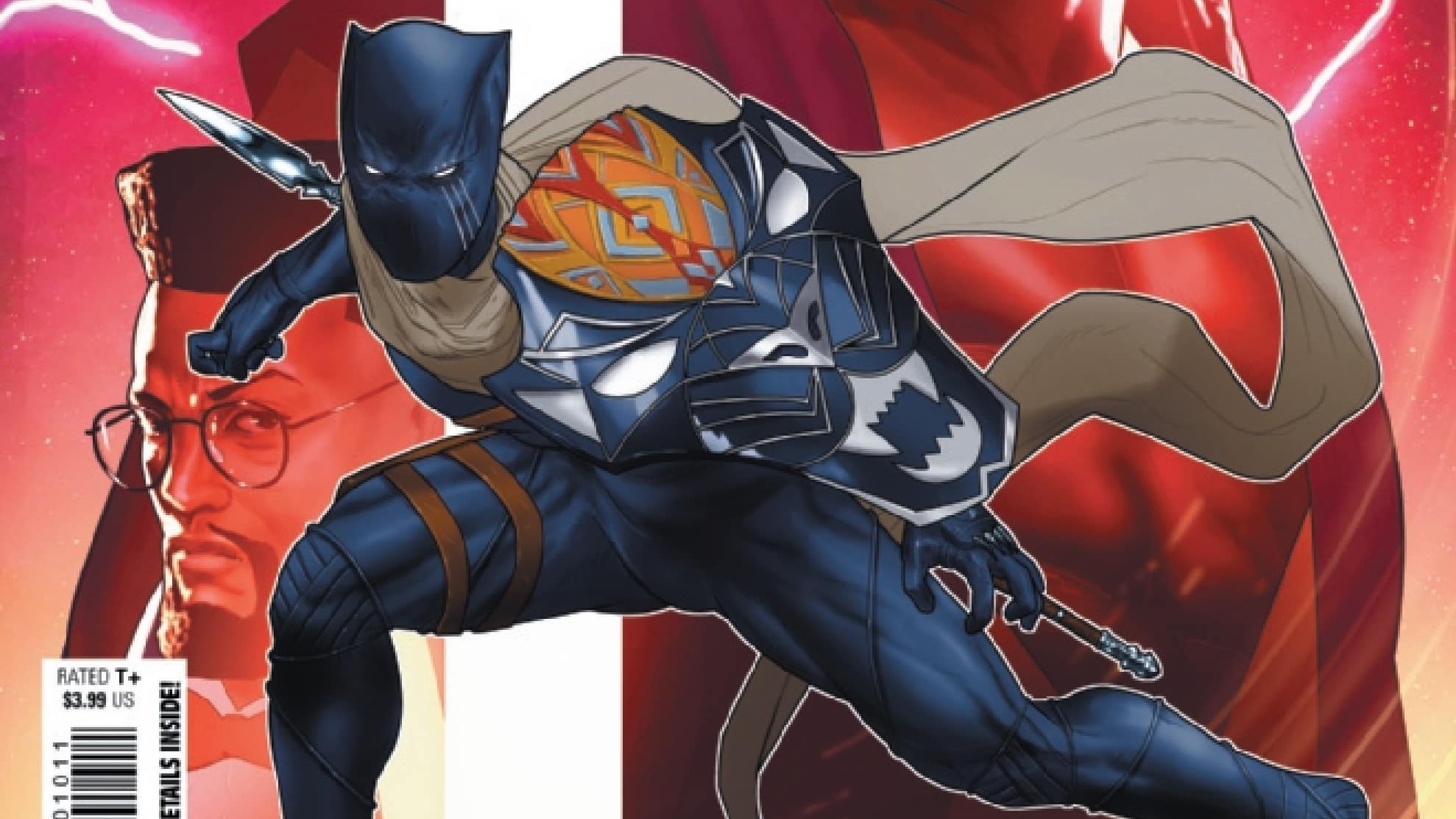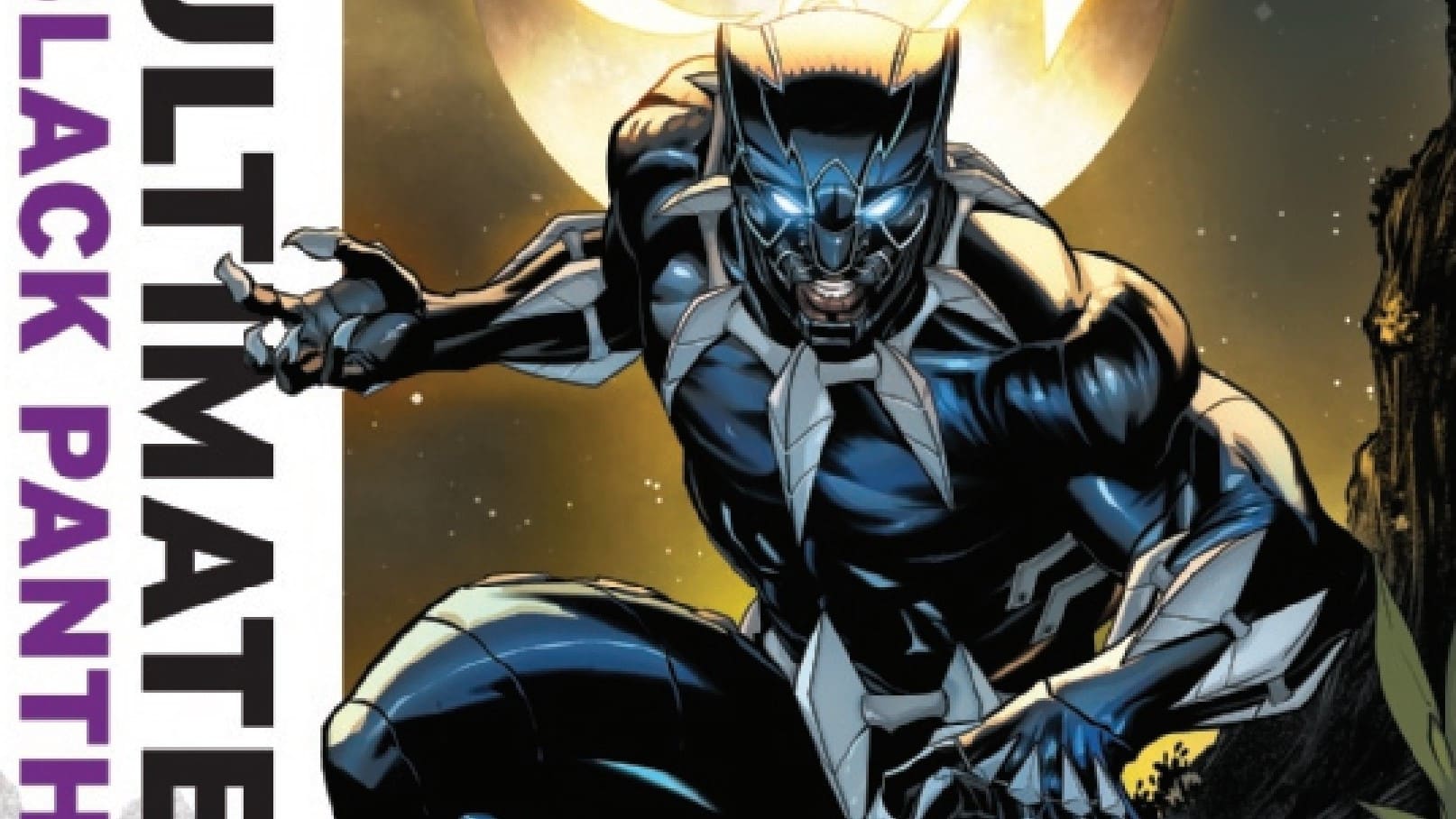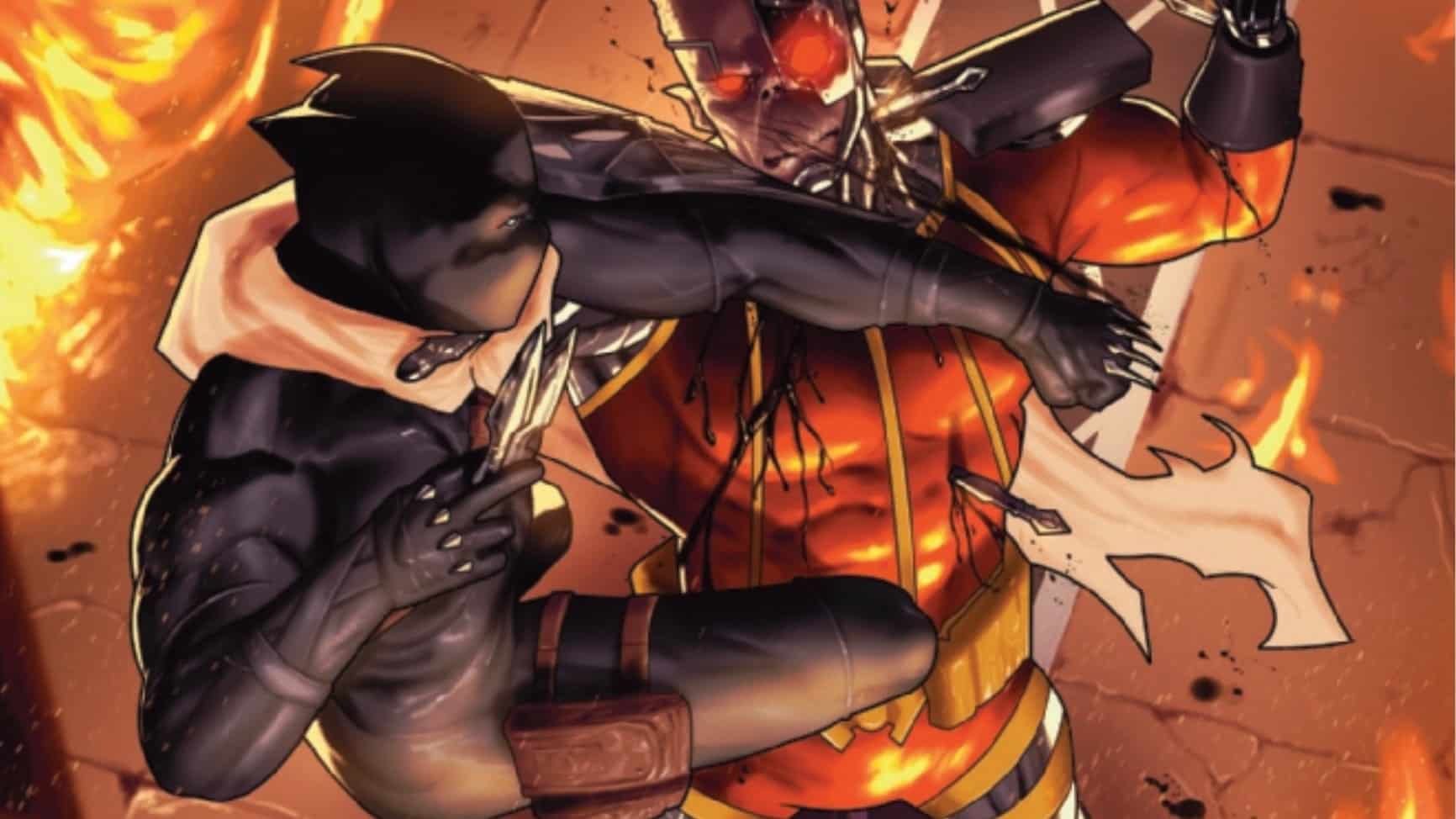After discarding Baba Nkisu, the Gray Wolf has found a new host: the crime lord’s daughter, Aliinya Nkisu. To defeat a supernatural power so great and to save Aliinya from the Gray Wolf, eater of souls, T’Challa calls upon the aid of allies new and old in Black Panther #10, written by Eve Ewing; drawn by Chris Allen; inked by Allen, Craig Yeung and Oren Junior; colored by Jesus Aburtov and Andrew Dalhouse; and lettered by Joe Sabino.
In many ways, we live in a world of conspicuous abundance: Even the more plebian of us has access to more ways to consume media, more ways to curtail our styles, and, well, more ways to read about Black Panther than ever before.
However, as streaming continues to become a more expensive, more complicated version of the cable cords we supposedly cut, and as fast fashion continues to steal from creatives and create gluts in overseas wastefields, one recognizes that other costs come with abundance.
So yes, while we have two variations (variants?) of Black Panther, is too (two?) much of a good thing — or anything — really beneficial?
Unfortunately, this question may be moot, at least for a few months. Black Panther #10 is the last of this story arc, and the last of Eve Ewing’s notable and notably brief run with the character. (A three-issue, non-Ultimate Black Panther series, led by writer Cheryl Lynn Eaton, is set to be published alongside the other Blood Hunt crossover series of books; Ewing’s slated to write her own X-Men team, featuring a barista Kitty Pride and an almost certainly de-coupled from Tony Stark Emma Frost.) The success of Ultimate Black Panther (Three initial printings of issue #1; at least two printings of issue #2) may hasten the announcement of a new creative team; or it may validate keeping 616 Panther in the Avengers and letting Ultimate Panther further (re)define the character.
In any case, this is the end of the road for the version of T’Challa that’s survived Secret Wars, rebuilt Wakanda into a democracy, united an intergalactic empire, then lost his crown, his kingdom and his off-again, on-again consort.
What’s left to talk about then? Well…
The Good

John Ridley’s interpretation of T’Challa focused on his hubris and its costs, separating the king from everything he loved. Part of what made the run so difficult to enjoy was that there was nothing likable about the character: no wisdom, no rationales justifying or softening his actions — just asshole statements after logicless leaps. After 15 issues, all we had was an unlikable king without a throne. Ewing’s done a yeoman’s job of (re)humanizing the character: His time in the city named after his father has been redemptive, both for his soul and for the people who feel like they’ve been forgotten. Ewing’s use of a post-industrial city in an advanced society clearly mirrors many of the issues rust-belt communities (near her native Chicago) deal with: petty crime, disconnects from both help and consequences. T’Challa’s presence here, then, had the opportunity to be redemptive not just for him, but for his community.
And up until here, the story largely works.
We see characters move, live, cry, emote. We see that actions have reactions, and we see those reactions have an emotional effect on the characters. Even in this last issue — where a spirit of vengeance (not that one) devourer of souls named Kuvu’ma looks to take T’Challa’s soul as payment for a perceived wrong committed by his great-grandfather — the banter is thoughtful and meaningful, balancing action and emotional depth.
But…
The Bad

The pace of Ewing’s run was, to be gentle, methodical: She introduced a whole array of characters, from a trans catwoman analogue, to a whole family line of gangsters, to the freedom-fighting lawyer T’Challa’s working to free in this issue. ALL of these characters get thrown into the mix here, blending action and dialogue at a frantic pace unlike anything she’s written elsewhere in the series. The introduction of the Intergalactic Empire, while welcome, feels rushed, as does the battle in space, as does the eventual resolution. This feels like at least three issues worth of material smashed into one normal-sized issue. While those who don’t like a meditative pace may be appreciative, this pacing and ending do not do justice to the roots Ewing methodically established. Readers who may have skipped a few issues will be lost as to who’s who; reader’s who haven’t skipped issues may also be lost, which is the problem when you introduce so much.
While we’ve certainly, thankfully, seen T’Challa entrench and embrace his people and culture, the need to set up so many characters and characterizations absolutely took away space that might have better been used for further character development.
Thus, we have a bloated cast of new characters who, in a rushed final issue, are summarily dismissed in ways that don’t do justice to their impact on the story. There was just too much introduced, to close all the loops well.
The Unfortunate

And of those new characters, specifically Beisa, the transwoman who flirted with T’Challa in the prior issues — and to whom T’Challa sheepishly returned the interest after acknowledging her truth?: Their closing interactions — not even a handshake as they separate, not present at T’Challa’s last meal in the city — feel conspicuous and disappointing. The two clearly struck up more than a working relationship, and it would have been fitting to see that chapter close fully.
(To be clear, this doesn’t mean I’m advocating for a relationship … or against one. I’m simply advocating for the character to be treated the same as any other femme fatale in the long history of comic femme fatales. No more, no less.)
And I say fully because it’s unlikely any of these characters — or the city itself — will make appearances in the next iteration of the comic. For the city’s gangsters, this is fine: Their appearances felt disjointed and hard to keep up with. For the lawyer N’Yobi, this is expected: His role, as guide and soul of the city incarnate, was filled. He served his purpose.
But, again, Beisa: Clearly Ewing created her with love and intention, and it’s unlikely that another creator will give her more than a cursory mention going forward. She deserved better.
Also unfortunate: the artistic compositions of this final issue. Again, everything feels rushed and jumpy, with panels spinning and splitting away from each other, adding to the franticness of the fight. The art isn’t bad, far from it, but the logistics of reading feel a little harder than necessary. That said, Chris Allen (along with Craig Yeung and Oren Junior) generally have done a great job bringing Birnin T’Chaka to life. Taurin Clarke’s covers have been magnificent, and I 100% hope this costume — hood, spear, claws and all — stays around. African Jedi Ninja is one hell of an aesthetic. Let it percolate for a bit more.
Was 10 issues always the plan? Did Ewing have a longer endgame, or was she simply filling in gaps that may have been left open by Ridley’s departure? And of departures: Was Ewing’s departure for X-Men already in the cards before she took the role?
Does any of this matter? Well, yes and no. As comic fans in the social media age, we tend to want to — need to — know how the sausage was made. And while knowing how something is made should have no bearing on how it tastes, some of that knowledge sometimes creates a desire to experience how things would have been.
And really, that’s the most unfortunate thing about the past few years of Black Panther: There just hasn’t been a level of ambition befitting the character. The flashes of ambition we see in this final issue are buttressed by the fact it’s the final issue.
Would more or longer have worked better? Did things have to end now? Questions that maybe don’t need answers, but still beg to be asked.
In any case, we end the series with T’Challa in a spiritually better place than he was when he left. He still has a long way to go if he wishes to be recognized as a king again (something he almost certainly will achieve in some fashion, for comics are nothing if not sticklers for nostalgia and the status quo), and I have no doubt he will reach that throne again.
I just wish the road there were less fraught with change and misdirection. But then again, would it be fun if it were easy?
Buy Black Panther #10 here. (Disclaimer: As an Amazon Associate, ComicsXF may earn from qualifying purchases.)
A proud New Orleanian living in the District of Columbia, Jude Jones is a professional thinker, amateur photographer, burgeoning runner and lover of Black culture, love and life. Magneto and Cyclops (and Killmonger) were right. Learn more about Jude at SaintJudeJones.com.






